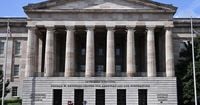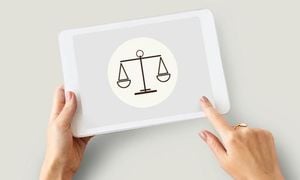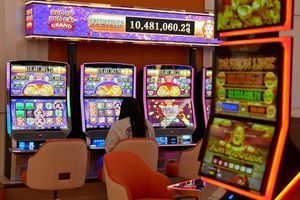On August 21, 2025, the White House released a pointed document titled "President Trump is right about the Smithsonian," thrusting America’s most prominent museums into the political spotlight and igniting a fierce debate among cultural leaders, artists, and the public. The document, which lists exhibits and programming at Smithsonian museums that the administration deems objectionable, marks a new chapter in President Donald Trump’s ongoing campaign to reshape the nation’s cultural institutions in line with what he calls "American ideals."
The White House’s list singled out, among other works, a 2020 painting titled "Refugees Crossing the Border Wall into South Texas," featured at the National Portrait Gallery. The administration’s objections to such exhibits are part of a broader effort: in March 2025, Trump signed an executive order directing Vice President JD Vance and the Department of the Interior to examine all aspects of Smithsonian museums and “remove improper ideology.” The president’s message has been blunt. On social media this August, he declared that the Smithsonian is “out of control,” giving the institution 120 days to reorient its content toward what he described as "American ideals."
“Everything discussed is how horrible our Country is, how bad Slavery was, and how unaccomplished the downtrodden have been — Nothing about Success, nothing about Brightness, nothing about the Future,” Trump wrote online, arguing that museums are focusing too much on America’s faults and not enough on its achievements. "We have the 'HOTTEST' Country in the World, and we want people to talk about it, including in our Museums," he added, underscoring his desire for a more celebratory depiction of American history.
But the administration’s moves have triggered a wave of concern—and outright defiance—among arts leaders. Ann Burroughs, president and CEO of the Japanese American National Museum in Los Angeles, minced no words in her response. “It’s nothing short of censorship,” she told local media. “The facts are facts, and they don’t change. And it’s the responsible duty of museums to be able to be the keepers of those facts.”
Letitia Buckley, CEO of La Plaza de Cultura y Artes in downtown Los Angeles, echoed the sentiment that museums have a duty to tell the full story of America. “Museums should leave people feeling proud of their history as Americans,” she said. “But that isn’t always a bright story. We have to acknowledge the darkness that many of us and our communities have gone through to get us to that brightness.”
The White House’s scrutiny is not limited to the Smithsonian. Museums across the country are reportedly reassessing their programming, sometimes making abrupt changes to avoid controversy. The American Alliance of Museums, in a public statement, warned of a growing "chilling effect" across the entire museum sector. "These pressures can create a chilling effect across the entire museum sector," the organization stated, noting that the threat of censorship is no longer hypothetical.
Recent events suggest this chill is already taking hold. In February, the Art Museum of the Americas—just blocks from the White House—canceled two exhibitions featuring Black and queer artists. According to Cheryl E. Edwards, the curator of one of the shows, the museum’s director confided that the decision was made to avoid antagonizing the White House after Trump’s executive order targeting diversity programs. “This is a chill, and an attempt to silence artists,” Edwards said.
The ripple effects have reached major artists and institutions. Amy Sherald, known for her portrait of Michelle Obama, canceled her highly anticipated fall show at the Smithsonian’s National Portrait Gallery out of concern for how her painting of a transgender Statue of Liberty would be displayed—or if it would be displayed at all. Meanwhile, the Smithsonian’s National Museum of African Art postponed a spring exhibition of L.G.B.T.Q. artists, citing fundraising issues, though the show had already been partly installed. The museum’s website now lists the show as opening in "early winter 2026."
Even smaller museums are feeling the heat. The Scottsdale Museum of Contemporary Art in Arizona changed both the title and the content of a traveling exhibition originally called "transfeminisms," cutting several works about gender and sexuality. Gerd Wuestemann, the museum’s president, insisted the changes were made to be "less direct and more inviting" and attributed the exclusions to logistical issues. But the show’s original curators disagreed, stating, “It was exhibited, but in a compromised form that betrayed its original intent. This is the new censorship: not a loud rejection, but a quiet dilution. And it’s just as effective.”
At the Dallas Museum of Art, the artist Jade Kuriki-Olivo saw her planned April performance moved off-site and made invitation-only due to concerns about live nudity and legal risks. The museum’s interim director, Tamara Wootton Forsyth, denied that censorship played a role, citing legal advice about public funding and live nudity. Still, the move was seen by many as another example of the growing caution among publicly funded institutions.
Surveys confirm that these are not isolated incidents. According to PEN America, a survey conducted last year found that 55 percent of art museum directors view censorship as a greater threat now than a decade ago, and 65 percent have faced pressure to exclude certain works at some point in their careers. Jonathan Friedman, managing director of U.S. free expression programs at PEN America, noted, “If we did the survey now it would show an increase in anxiety and concerns,” underscoring the rapid deterioration of confidence in artistic freedom.
Julie Trébault, executive director of Artists at Risk Connection, reported a sharp uptick in requests for help navigating censorship issues. “This sharp increase is alarming and points to a rapidly deteriorating climate for artistic freedom domestically,” Trébault said. She highlighted that artists engaged in politically sensitive or socially critical work, or those from marginalized communities, are feeling especially vulnerable.
Arts leaders are not standing by quietly. The National Coalition Against Censorship and the Vera List Center for Art and Politics are issuing a joint statement this week, signed by more than 150 organizations and 275 individuals, insisting that "cultural institutions must maintain autonomy over programming choices, curatorial decisions and artistic content." The statement argues, “They need the freedom to showcase visionary work that inspires, is unexpected, challenges dominant narratives and questions those in power.”
Meanwhile, the Trump administration’s efforts to reduce arts funding, revoke university grants, and exert greater control over the Smithsonian Institution are being watched with growing apprehension by museum professionals nationwide. As Tom Finkelpearl, a veteran curator, put it: “There’s never been this much tension. People are playing it safe and we’ll never know.”
As the 120-day deadline for the Smithsonian to align with "American ideals" approaches, the nation’s museums find themselves at a crossroads, caught between political pressure and their mission to preserve and present the full spectrum of American history and culture. The outcome of this standoff could shape the future of artistic freedom in the United States for years to come.




